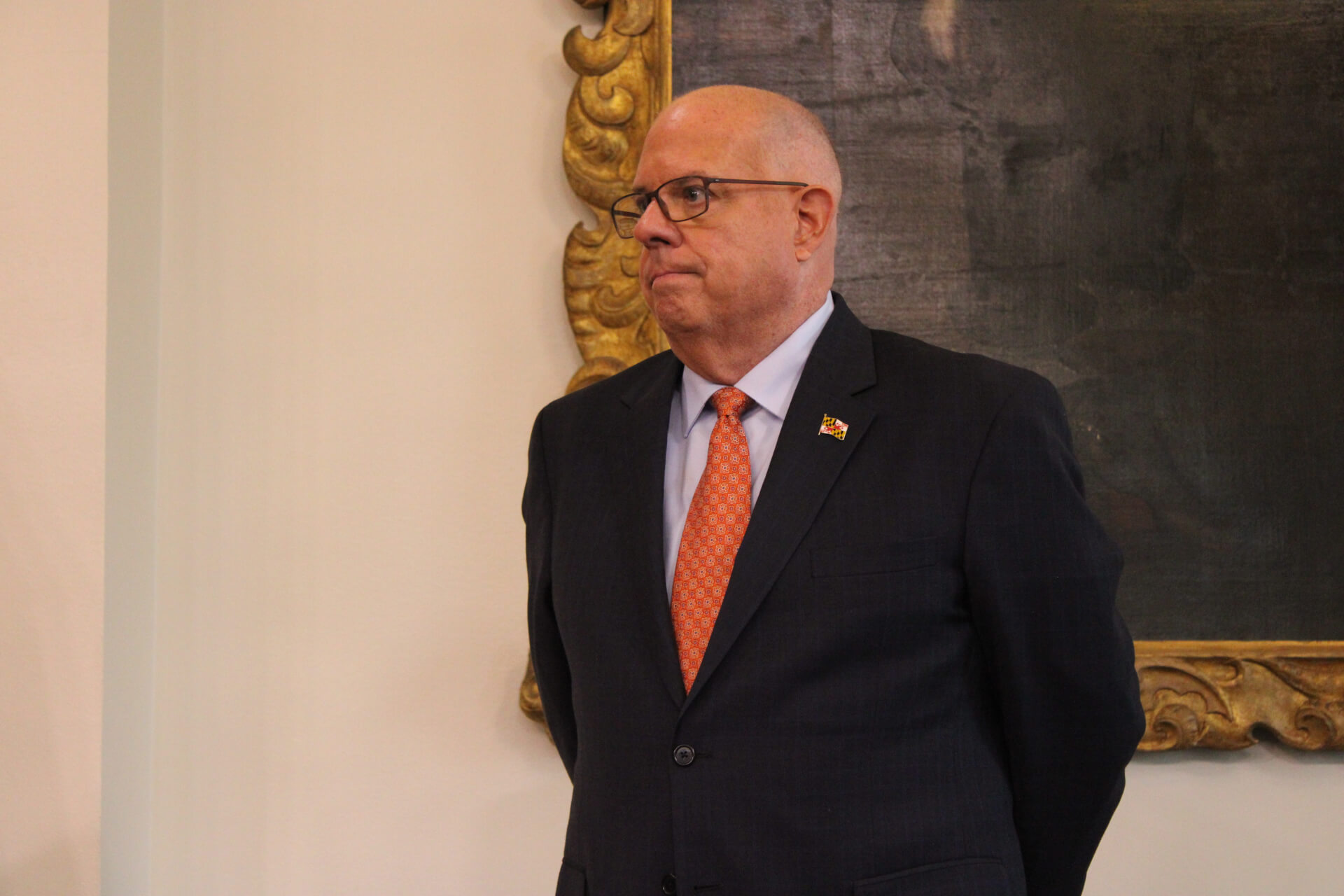Kalman Hettleman: Gov. Hogan Missed the Chance to be an ‘Education Governor’

It wasn’t so long ago that being known as an “education governor” — that is, a governor who made K-12 school reform a signature priority — was a steppingstone to national recognition and higher office. In the 1980s and 1990s, the most prominent education governors included Bill Clinton in Arkansas, George W. Bush in Texas, Lamar Alexander in Tennessee and Richard Riley in South Carolina. Two of them, you’ll quickly notice, moved up to the White House while the others became secretaries of the U.S. Department of Education. Notably, they were evenly divided between Republicans and Democrats.
It’s hard to believe that this history lesson escaped the notice of someone as politically astute and ambitious as Larry Hogan. And yet, for unexplained reasons, in his seven years as governor of Maryland, he has missed numerous opportunities to show leadership on school reform, including the landmark Blueprint for Maryland’s Future.
The Blueprint came about in the face of overwhelming evidence that schoolchildren were being denied their constitutional right to an adequate education. The Kirwan Commission was convened in 2017 to recommend sweeping reform. I was a member of the Commission. Its recommendations, which were incorporated in the Blueprint, received initial bipartisan support from the General Assembly and Gov. Hogan. And the Blueprint received national acclaim as a model for school reform.
However, over time, Gov. Hogan became increasingly negative. He expressed misgivings about possible costs, but refused requests by the Commission to meet or propose specific ideas. By the time the General Assembly enacted the Blueprint implementation bill in 2020, he referred to the “Kirwan Tax Hike Commission” and vetoed the bill. When the veto was overridden in 2021, he said, “This is not the end of this fight. This is the beginning.”
And in his budget for 2023 submitted two weeks ago, he spitefully omitted about $140 million in Blueprint aid, including $126 million for Baltimore City and Prince George’s County.
Whatever his political motives, he has erred on the fiscal facts. Clear evidence shows that the Blueprint is underfunded, despite popular perception that its $4 billion dollar price tag is massively expensive. As I’ve written in detail elsewhere, the Blueprint falls far short of meeting the constitutional standard of “adequacy,” and the Maryland ACLU, in a pending lawsuit, and other advocacy groups concur.
In brief, the $4 billion cost of the Blueprint (which is actually projected to be closer to $3.8 billion) is the annual amount of additional state aid for education that will not be reached until 2034. Over the 13 years until then, the average annual increase in current state aid is only about 3.5% per year. And in terms of all state general fund spending for all purposes, the $4 billion is an average annual increase of only about 1.5% per year.
If education is truly the state’s top priority as Gov. Hogan and other leaders proclaim, these are remarkably small percentage increases over the life of the Blueprint. What’s more, the $4 billion pales further when compared to the state’s fiscal capacity. Revenues from current tax sources are roughly projected to grow at around 3% per year. Experts propose progressive tax measures that could swell revenues by billions of dollars annually.
The political bottom line is a no-brainer: If Gov. Hogan had been supportive, the General Assembly would have sought more Blueprint funding, especially targeted at the needs of low-income and Black and brown students.
Beyond the Blueprint, Gov. Hogan has lagged in exerting leadership to bring about, in collaboration with education and health officials, the best feasible statewide policies.
His uncooperative positions on mask mandates are one example. At the peak of the pandemic, despite the fact that about a third of local districts were not requiring masks for students and staff, he opposed a state mandate, saying it was a local decision. Then, after the new state superintendent and the state board of education adopted a regulation requiring statewide masking, he declined to exercise his authority to expedite its effective date. Most recently, he has waffled on lifting of mandates.
On another major subject, the governor has failed to follow through effectively on his frequent promises to hold schools accountable and ensure taxpayers get their money’s worth from education spending. By executive order, he created his own Office of Education Accountability, and got the General Assembly to create an Inspector General for Education. But neither of these entities has done any in-depth analyses or monitoring of expenditures for instruction or other school essentials. And he has repeatedly delayed the release of funding for the watchdog Blueprint Accountability and Implementation Board.
The next governor should be held to a higher standard. A first step is to prevent gubernatorial candidates from getting away with empty campaign rhetoric. They must be questioned and pinned down on the difficult policy choices that lie ahead.
Three questions should be foremost. One, what provisions in the Blueprint do you believe require strengthening or clarification? Two, in the face of so much evidence that the Blueprint is under-funded for the long haul, what are your priorities for additional spending? And three, what specific proposals would you support for additional revenues earmarked for the Blueprint?
There are plenty more problematical school subjects, including current efforts by Republicans to make public education a cultural battleground. But if wannabe governors do their homework and have the smarts and courage to confront all these challenges, who knows? The next governor in Maryland in 2022 might wind up as the next education governor to ascend to the Oval Office.




 Creative Commons Attribution
Creative Commons Attribution